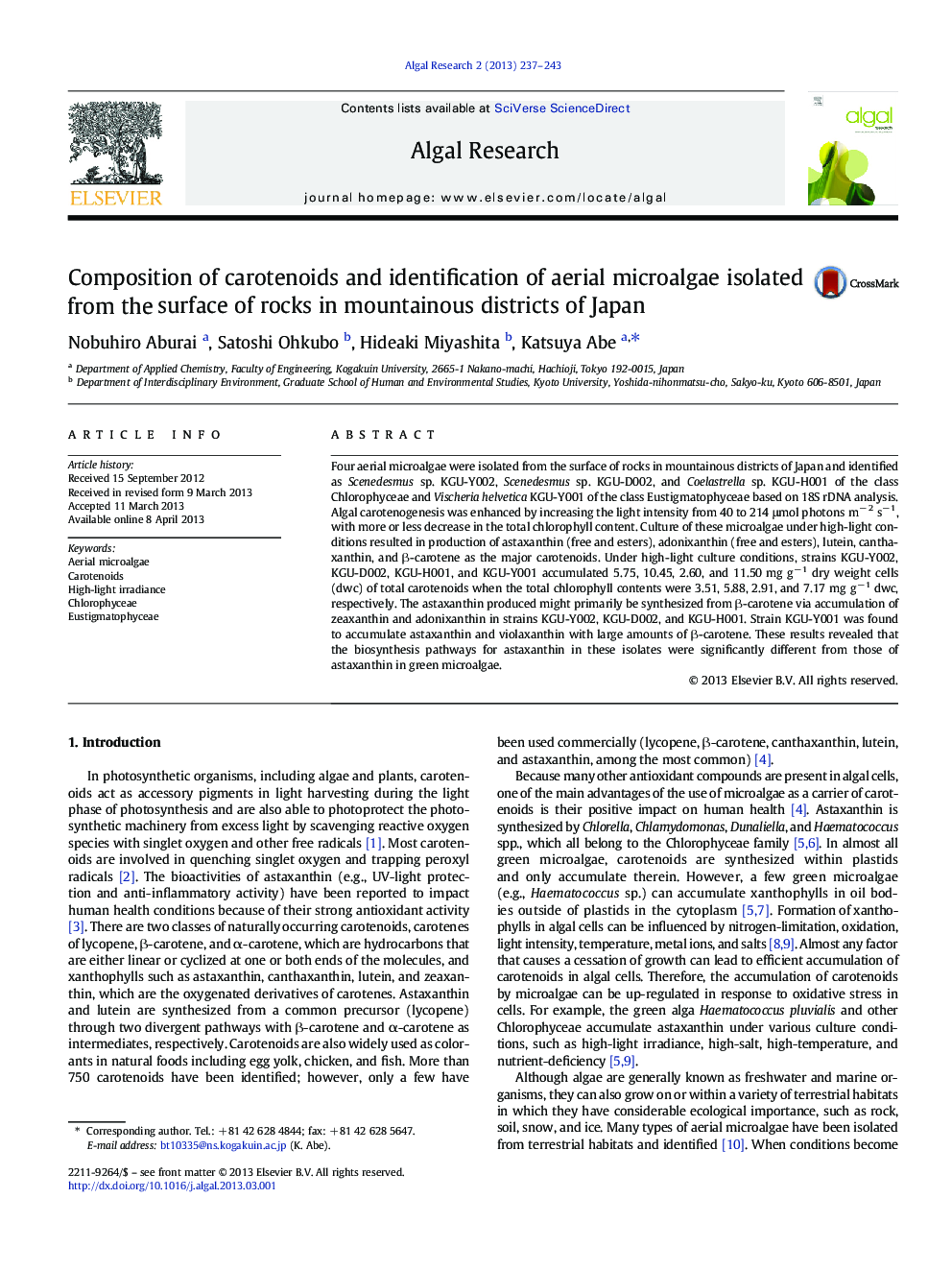| Article ID | Journal | Published Year | Pages | File Type |
|---|---|---|---|---|
| 1742069 | Algal Research | 2013 | 7 Pages |
Four aerial microalgae were isolated from the surface of rocks in mountainous districts of Japan and identified as Scenedesmus sp. KGU-Y002, Scenedesmus sp. KGU-D002, and Coelastrella sp. KGU-H001 of the class Chlorophyceae and Vischeria helvetica KGU-Y001 of the class Eustigmatophyceae based on 18S rDNA analysis. Algal carotenogenesis was enhanced by increasing the light intensity from 40 to 214 μmol photons m− 2 s− 1, with more or less decrease in the total chlorophyll content. Culture of these microalgae under high-light conditions resulted in production of astaxanthin (free and esters), adonixanthin (free and esters), lutein, canthaxanthin, and β-carotene as the major carotenoids. Under high-light culture conditions, strains KGU-Y002, KGU-D002, KGU-H001, and KGU-Y001 accumulated 5.75, 10.45, 2.60, and 11.50 mg g− 1 dry weight cells (dwc) of total carotenoids when the total chlorophyll contents were 3.51, 5.88, 2.91, and 7.17 mg g− 1 dwc, respectively. The astaxanthin produced might primarily be synthesized from β-carotene via accumulation of zeaxanthin and adonixanthin in strains KGU-Y002, KGU-D002, and KGU-H001. Strain KGU-Y001 was found to accumulate astaxanthin and violaxanthin with large amounts of β-carotene. These results revealed that the biosynthesis pathways for astaxanthin in these isolates were significantly different from those of astaxanthin in green microalgae.
